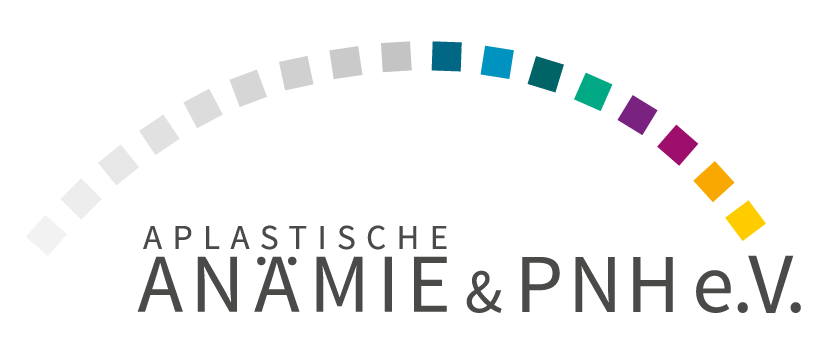
Patient story by Ulrike Göbel
The first abnormalities in my blood count were found in March 1999 in the form of thrombocytopenia, when I went to donate blood (irony of fate?). At that stage I hadn’t noticed any physical symptoms such as an increased bleeding tendency. But a few weeks later, the erythrocyte and leukocyte values had changed too; I became anaemic, and there were more lymphocytes than usual among the leukocytes. At first there was no clear diagnosis from the two bone marrow punctures, so that immunosuppressive treatment was prescribed with little justification until October 1999, when another puncture supported the diagnosis of “very severe aplastic anaemia (vSAA)”.
By that time I was already dependent on transfusions, and was told to go to hospital as soon as the diagnosis was made, in order to receive the first ATG and begin ciclosporin therapy, which continued until the summer of 2007. The rabbit ATG had no effect, but I continued to receive transfusions (platelets about every 6 days and red blood cells about every 14 days) as well as numerous preventive measures to support my weak immune system. I could only wait and hope that the bone marrow would recover.
In February 2000 I was diagnosed with PNH, but it didn’t play a role since treatment of aplastic anaemia was still the focus. Two months later, I received the second treatment with ATG (horse). In June 2000, two months after my therapy, the bone marrow started to show some platelet production. This was enough to discontinue the transfusions, and prophylaxis against infection was gradually tapered off. I received my last foreign RBCs in January 2001, and the first visible PNH crisis occurred at the same time.
By 2002, my blood levels had gradually stabilised, but the haemoglobin levels already showed persistent PNH crises. The associated symptoms were mitigated by regular administration of packed RBCs (since autumn 2005) and prednisolone, but they have significantly impaired my quality of life. I was particularly burdened by a pronounced feeling of weakness, which was often associated with the feeling that a rock was lying on my stomach. I therefore started therapy with the antibody eculizumab in June 2010. Since then, the haemoglobinuria has disappeared; this is a great relief, as I notice the PNH symptoms less often and less intensely. However, I still need transfusions and my stamina is very limited. My leukocyte and platelet values are stable.
I have been on an invalidity pension since 2000. I took advantage of the associated financial security and “leisure time”, and from 2001 to 2006 I studied history part-time at an English online university, which I had always wanted to do. I enjoyed my studies a lot, but the pressure on performance put me under considerable stress and showed me that I cannot really work in a concentrated way in the long term.
My employer has supported me for the entire period of my illness and has employed me for two half days a week since 2001. This gives me the opportunity to take part in professional life and to maintain social contacts in addition to my voluntary commitment. I greatly appreciate this.
The approval of ravulizumab in July 2019 made it possible for me to increase the intervals between attending a practice or clinic for infusions from every two weeks to every eight weeks. However, the fatigue still makes things difficult, even though my RBC values have now stabilised and I hardly need any concentrates. I have high hopes for medications that are more effective than C5 inhibitors in reducing haemolysis, and some of these are already undergoing clinical trials.
You can contact me by email at ug-sh(at)web.de
Berlin, August 2020

